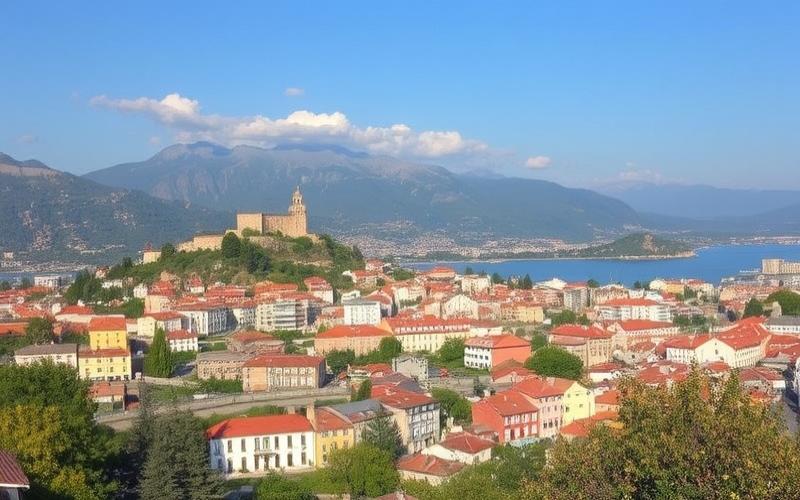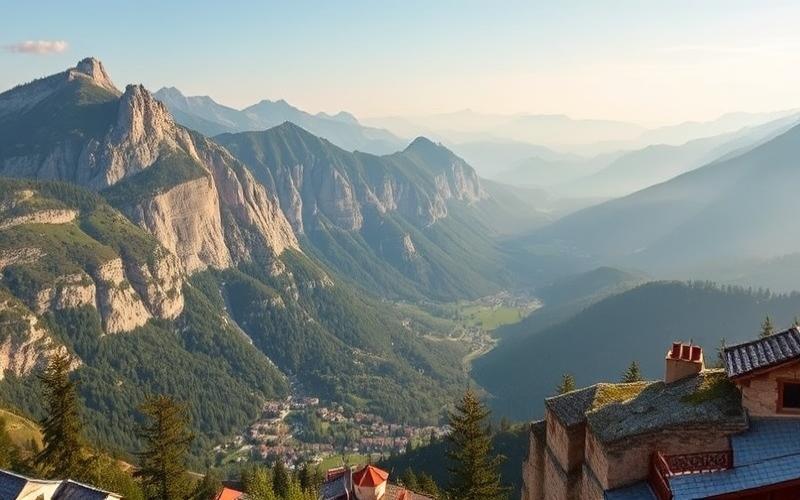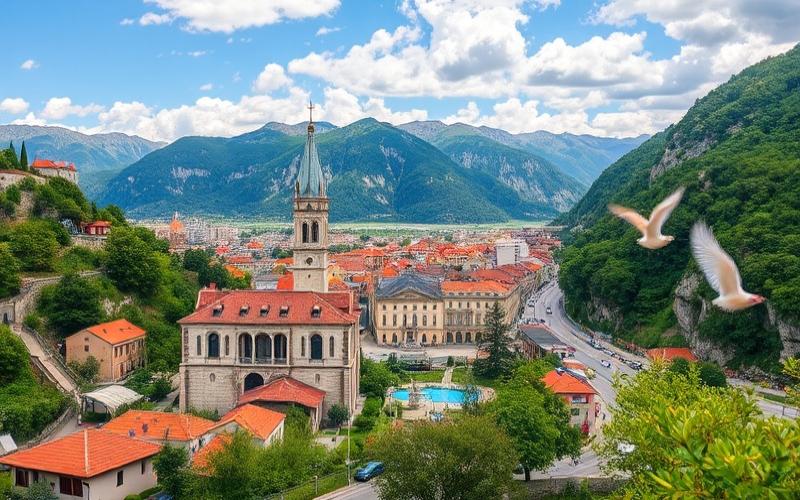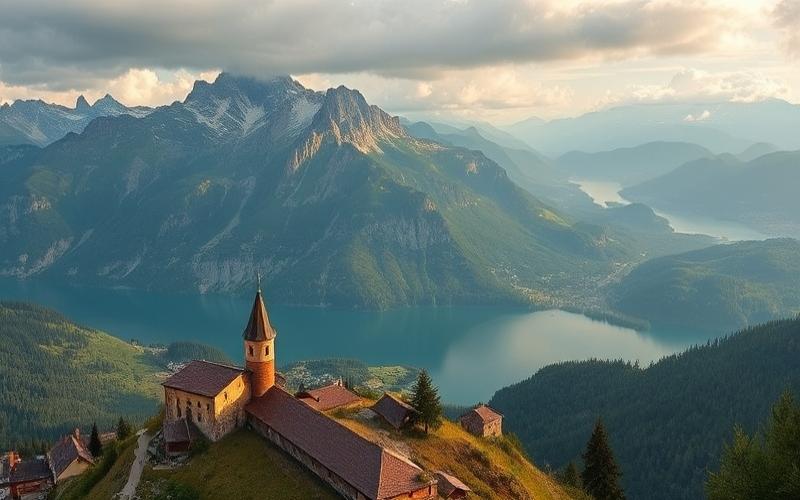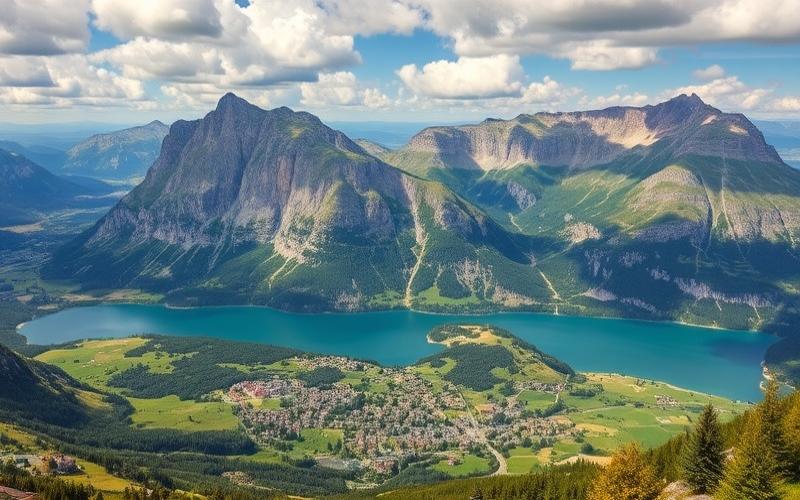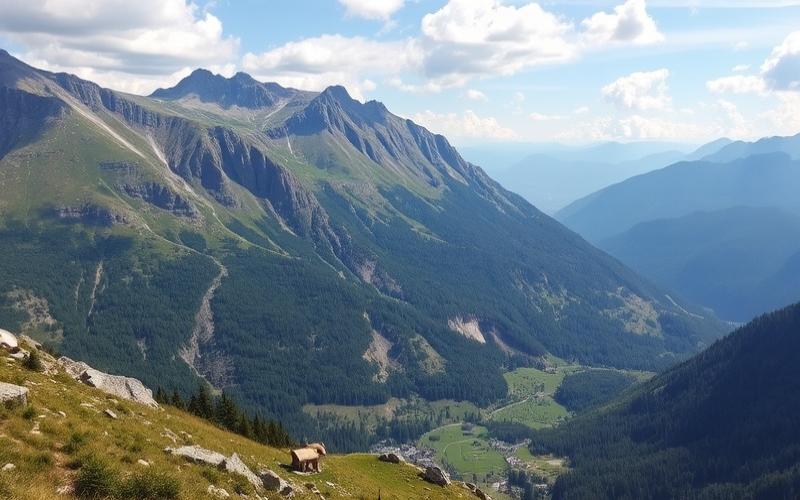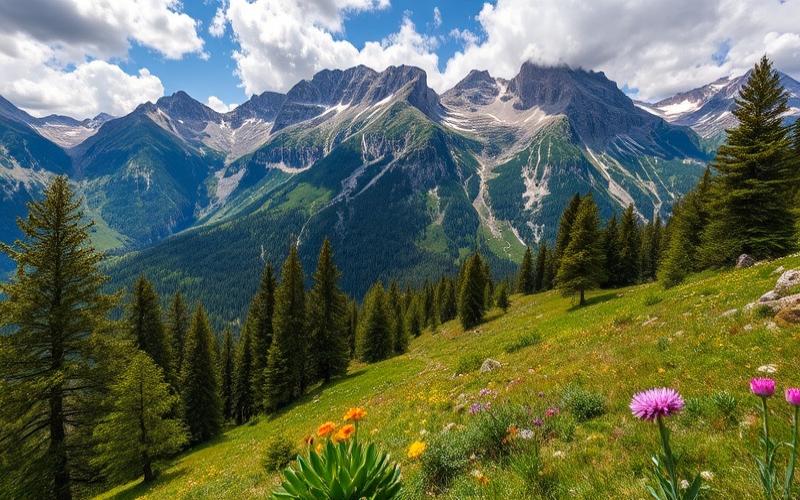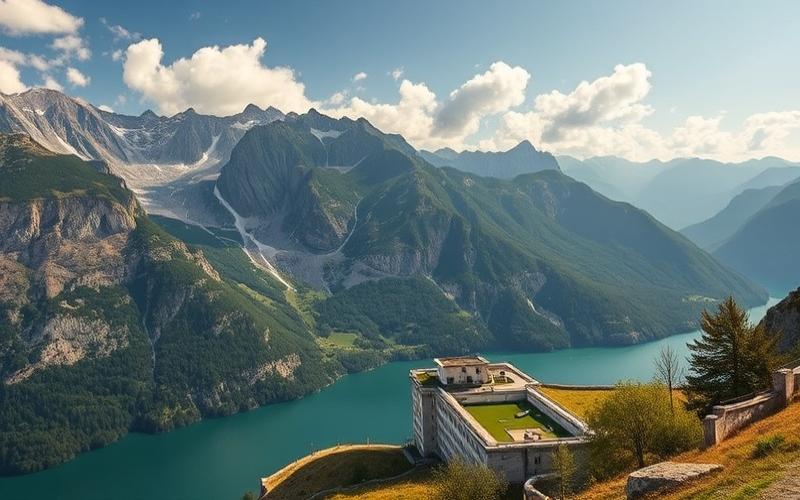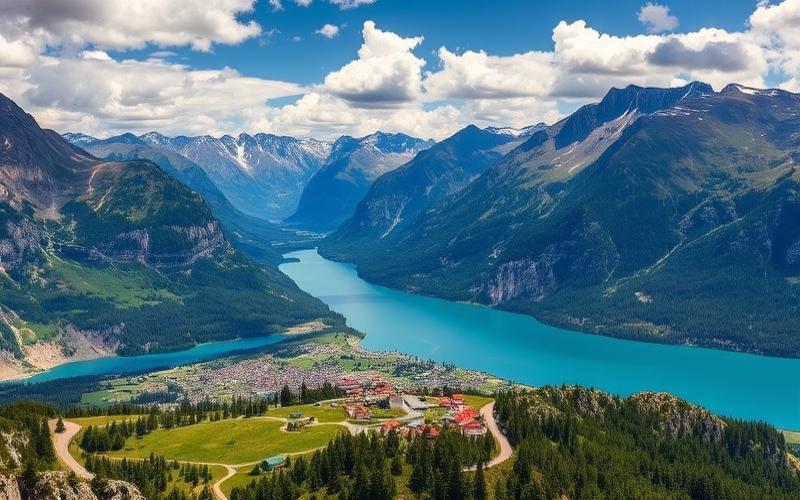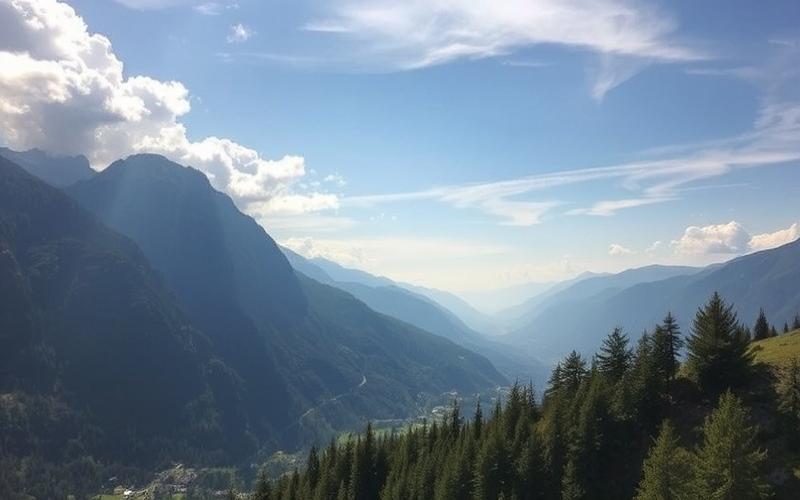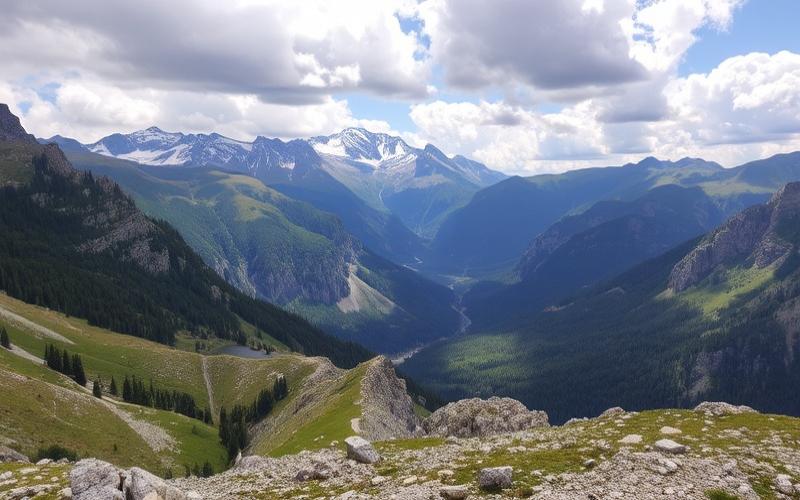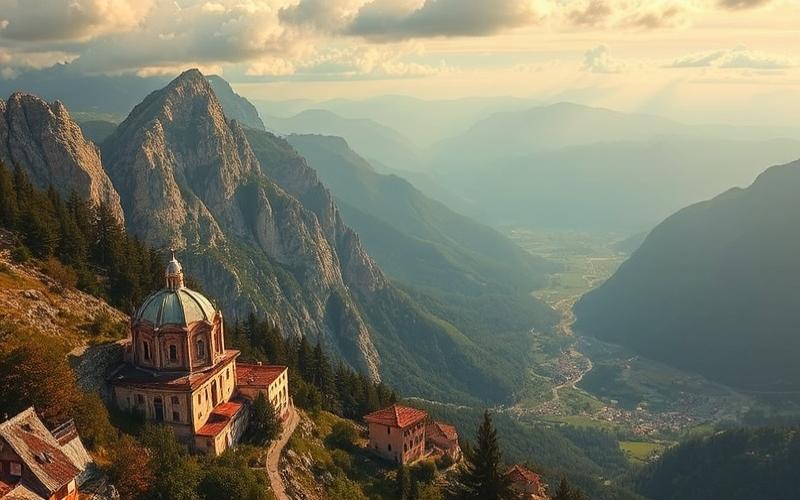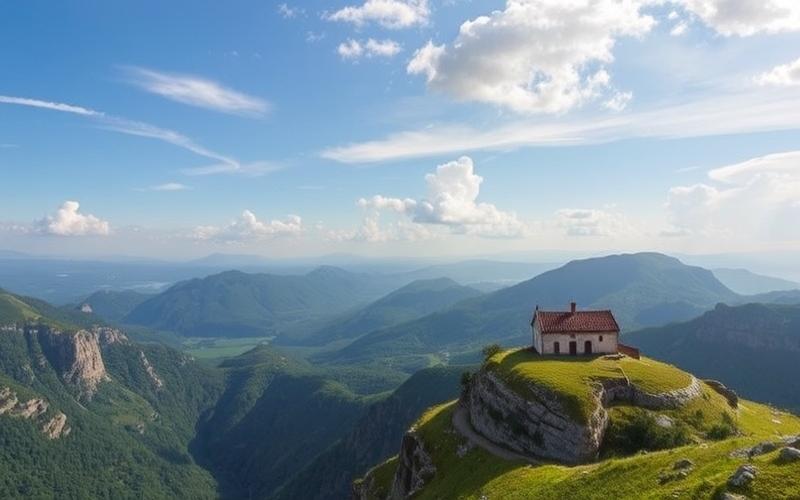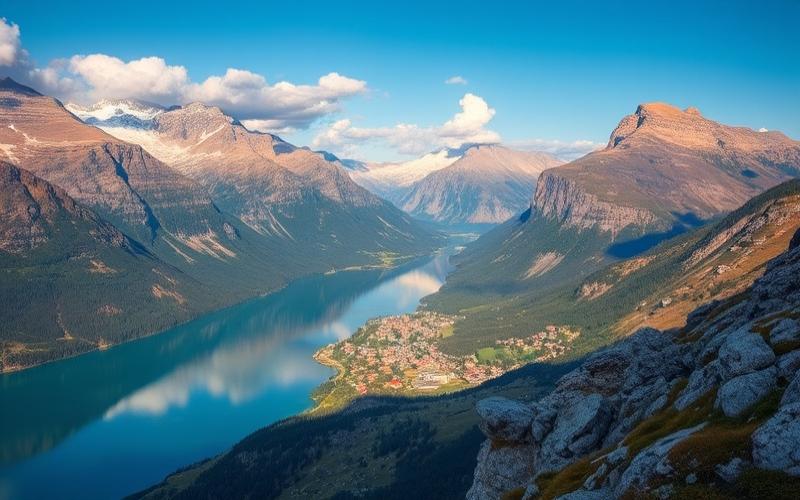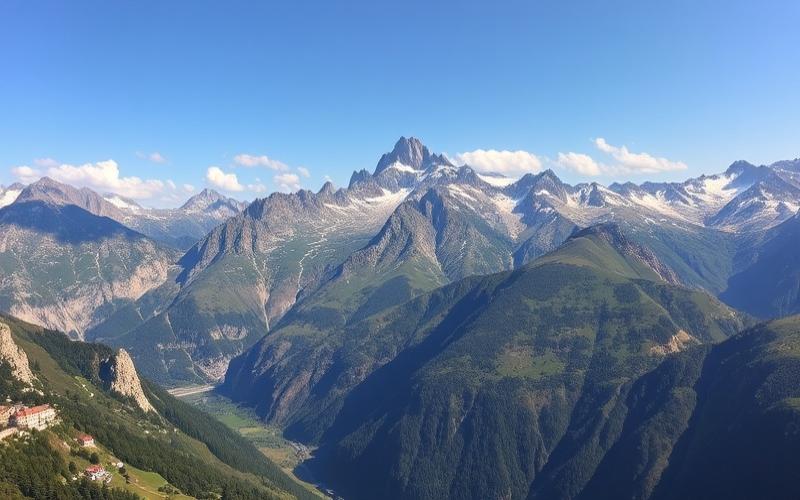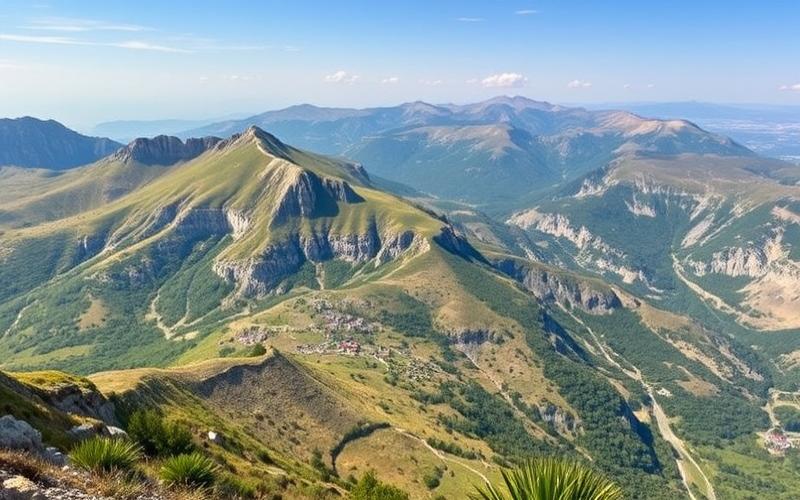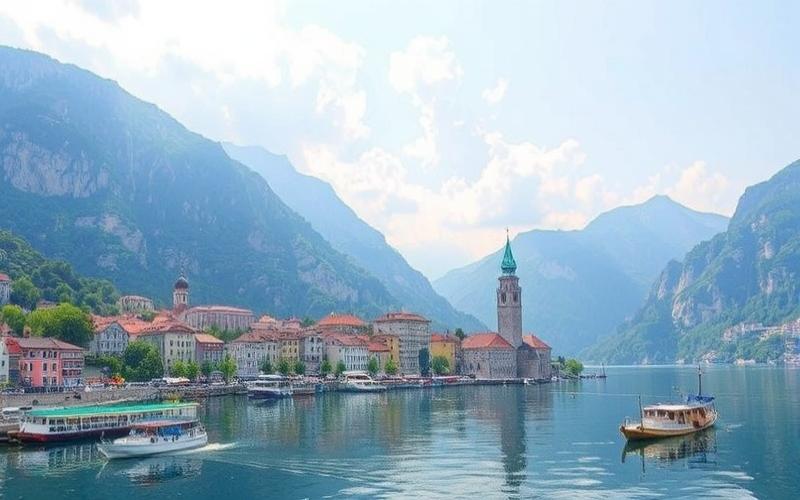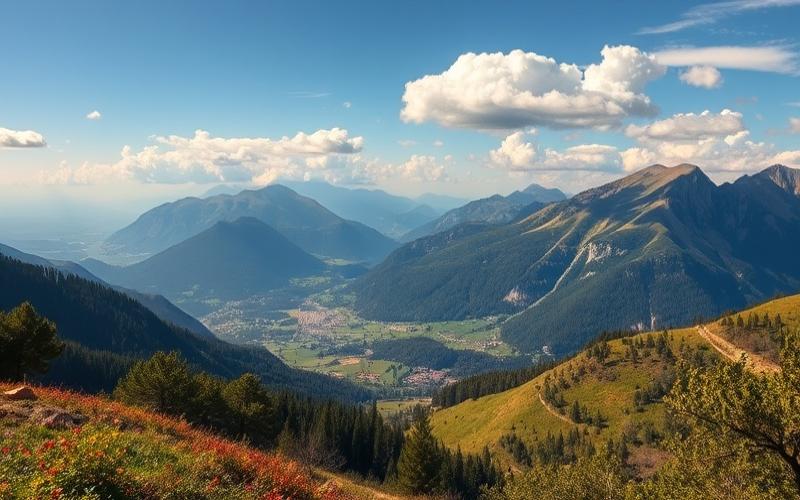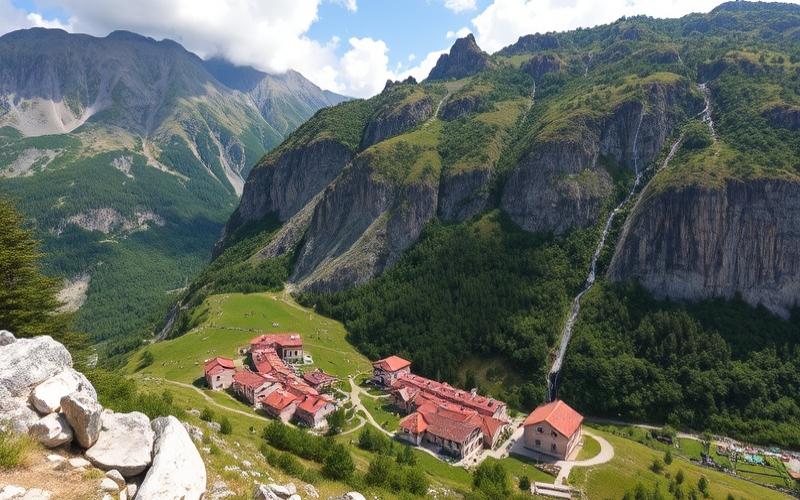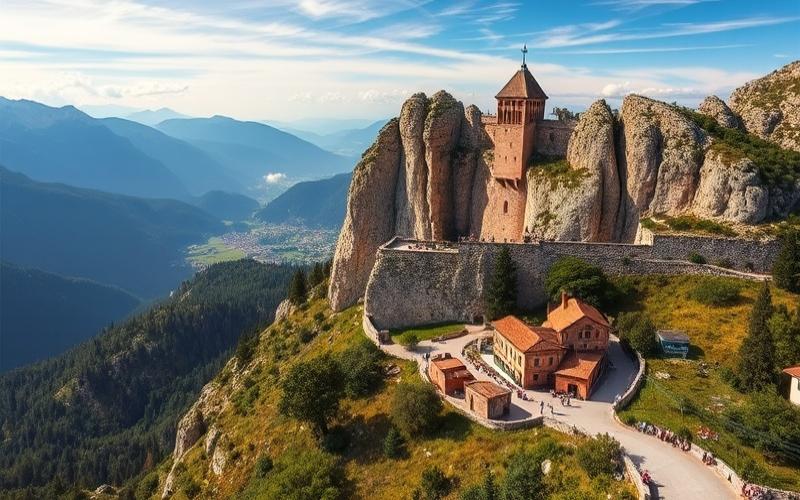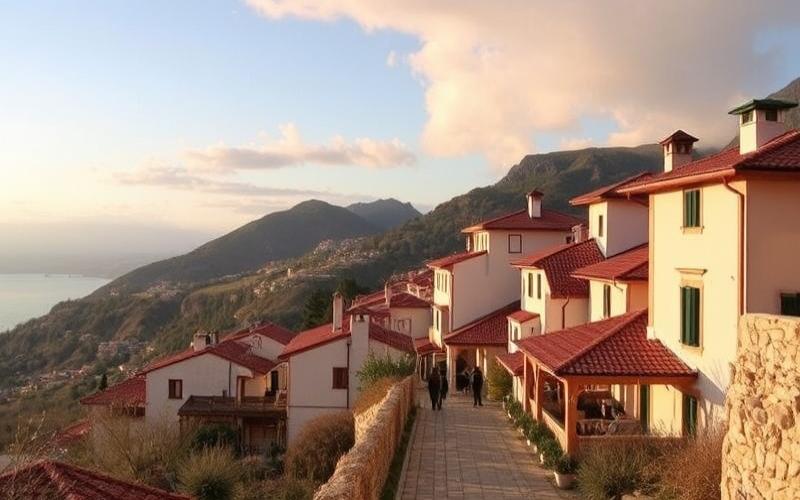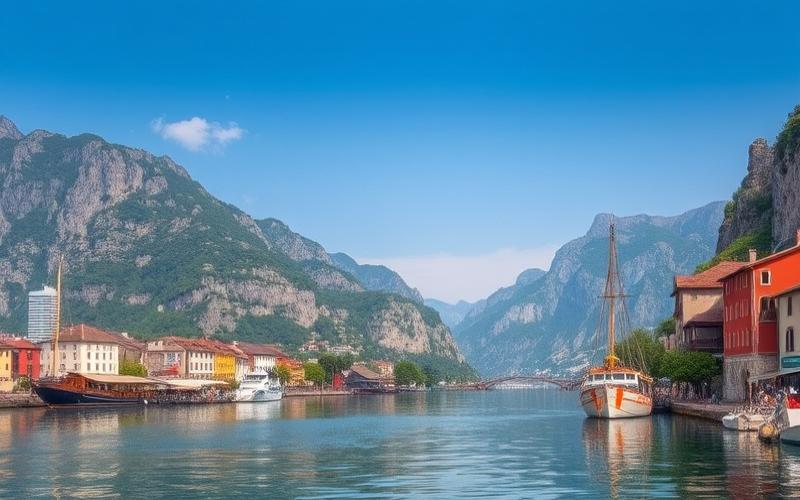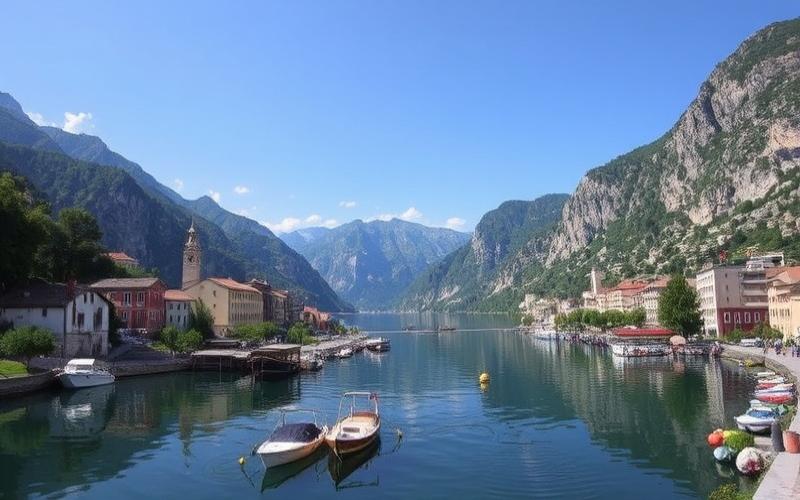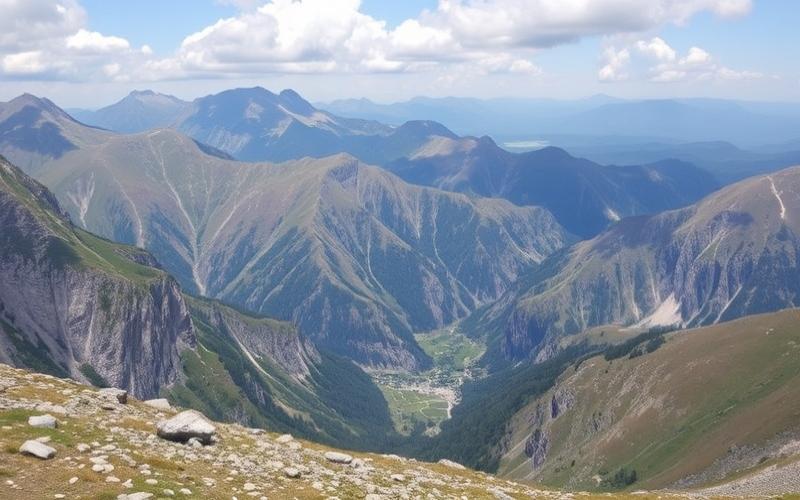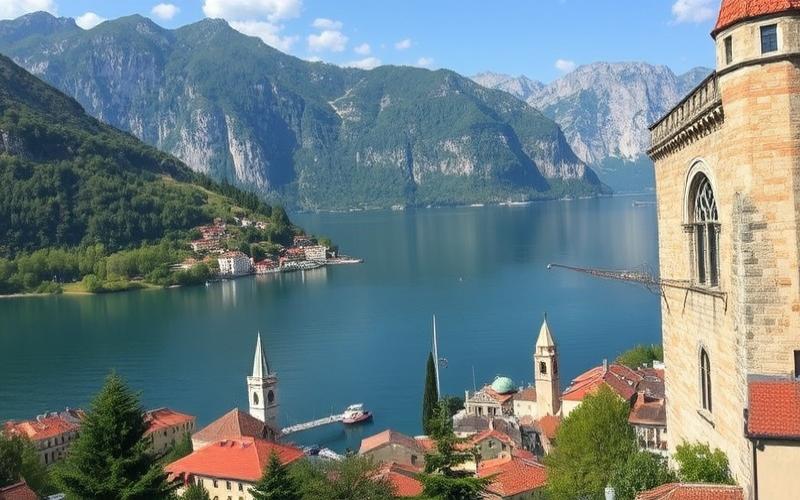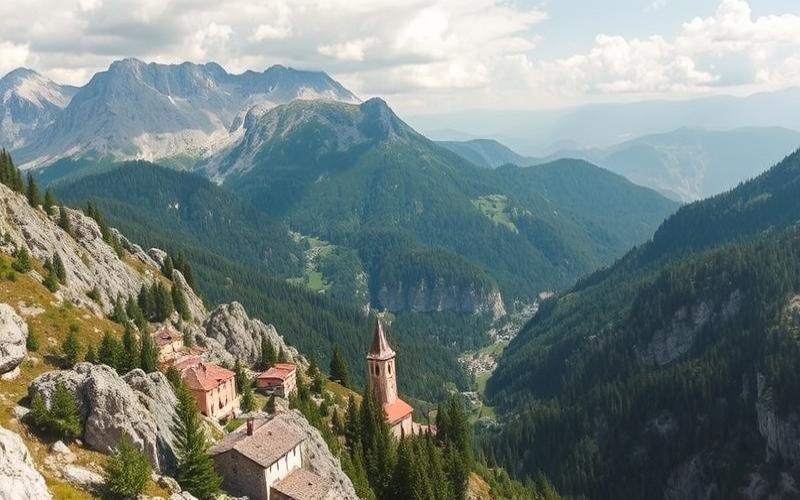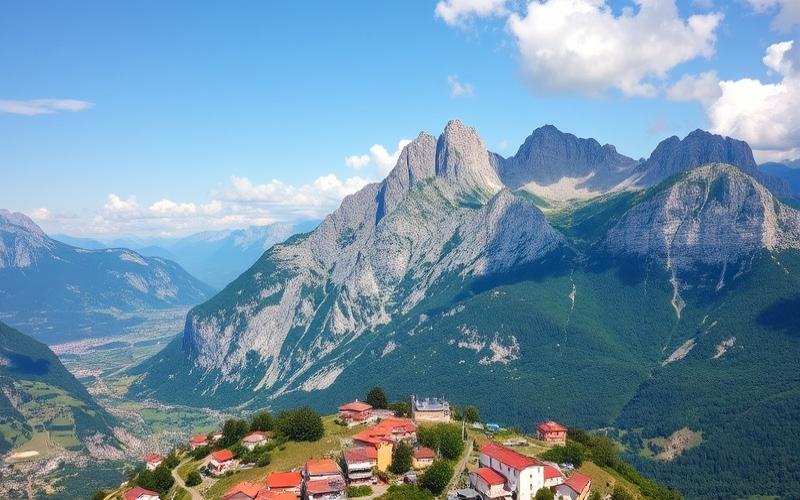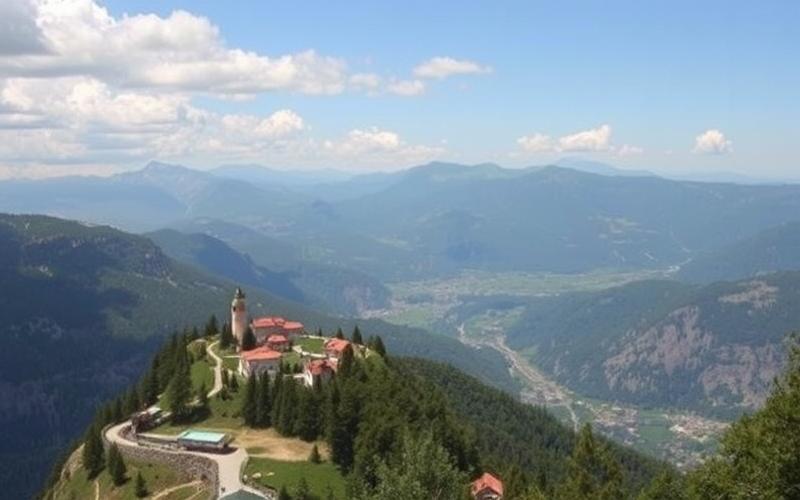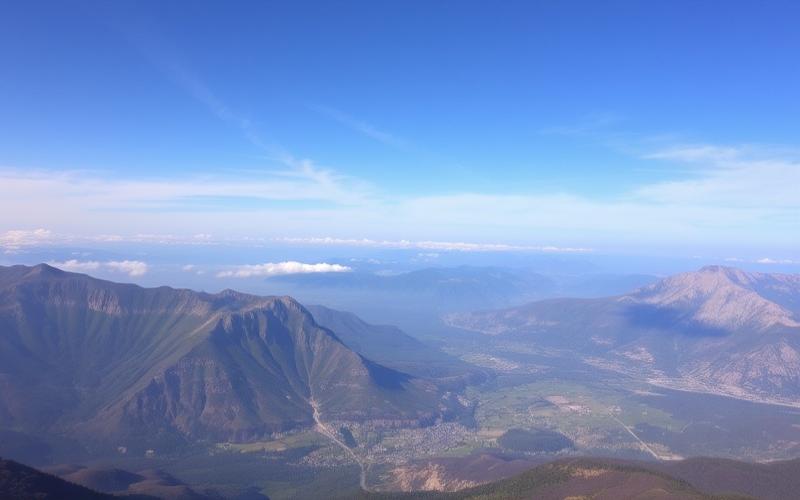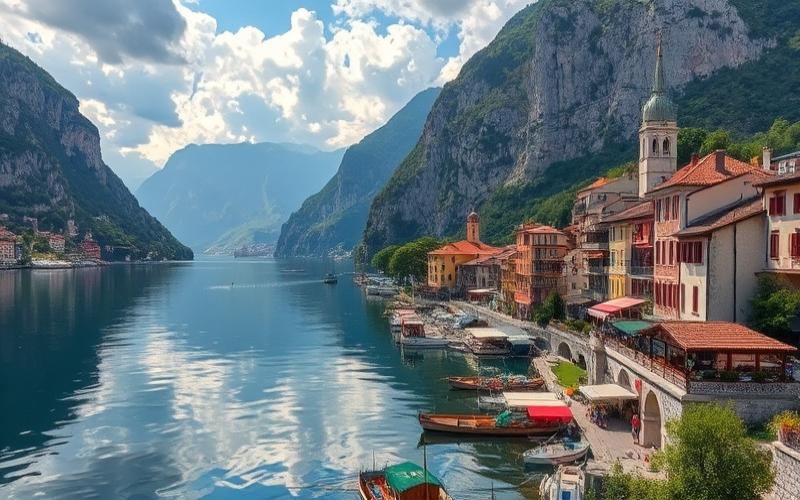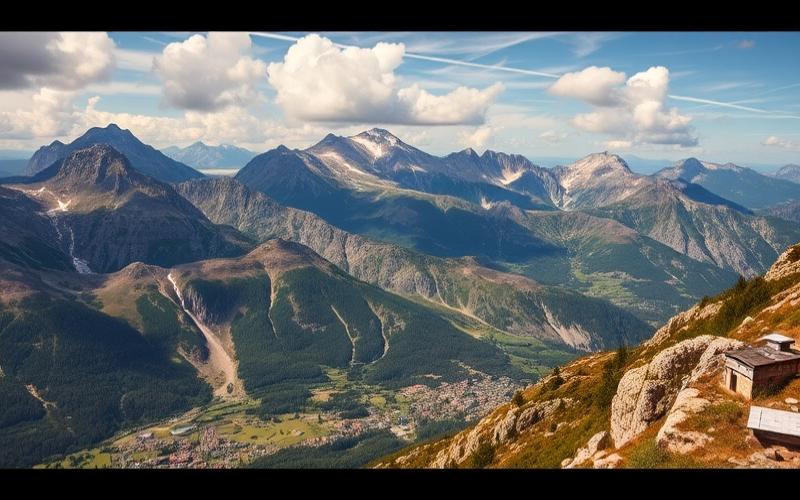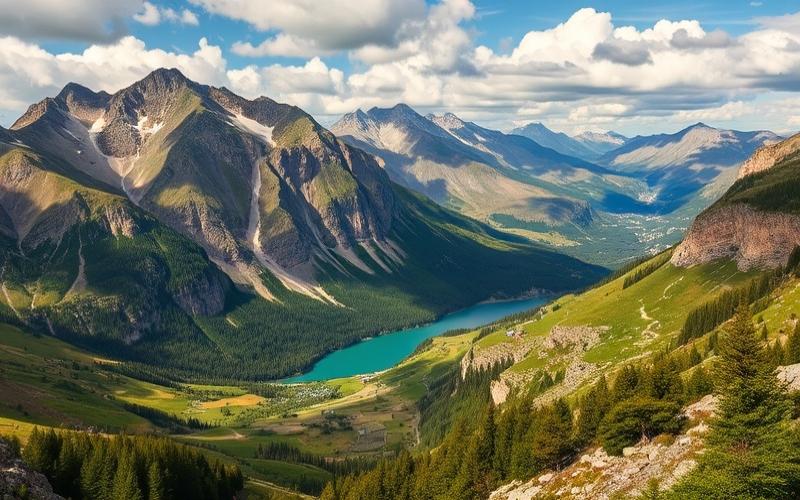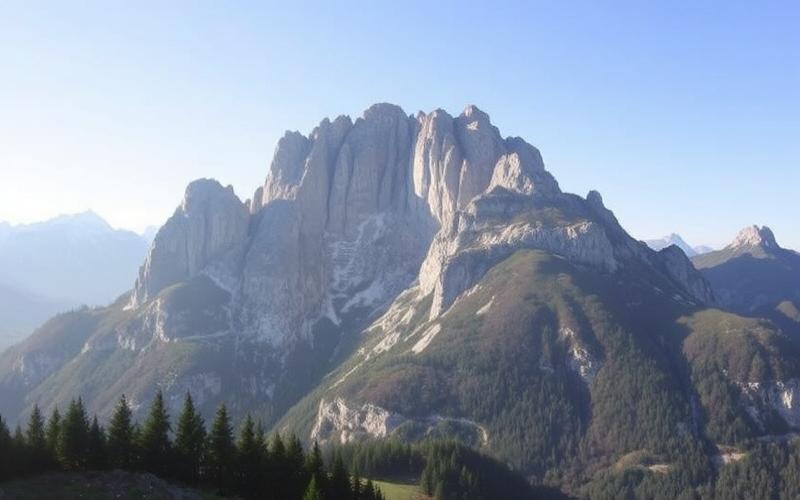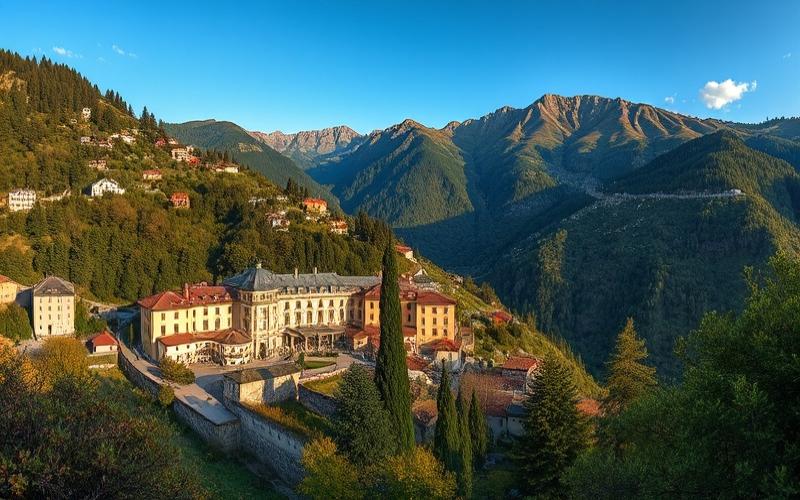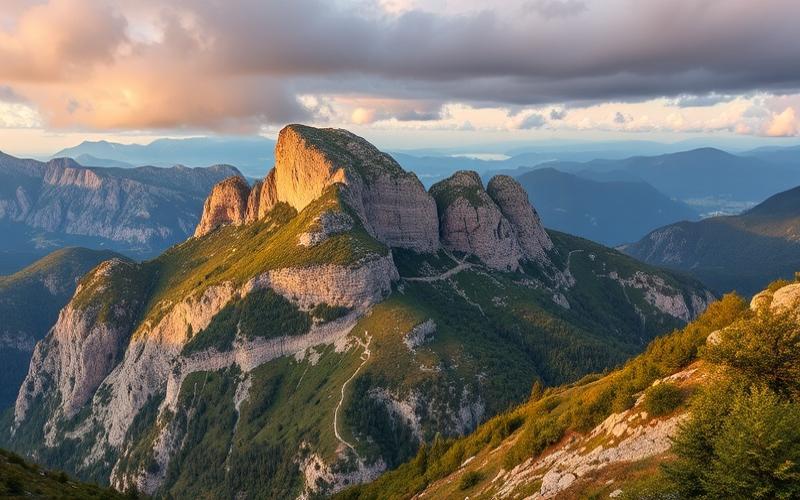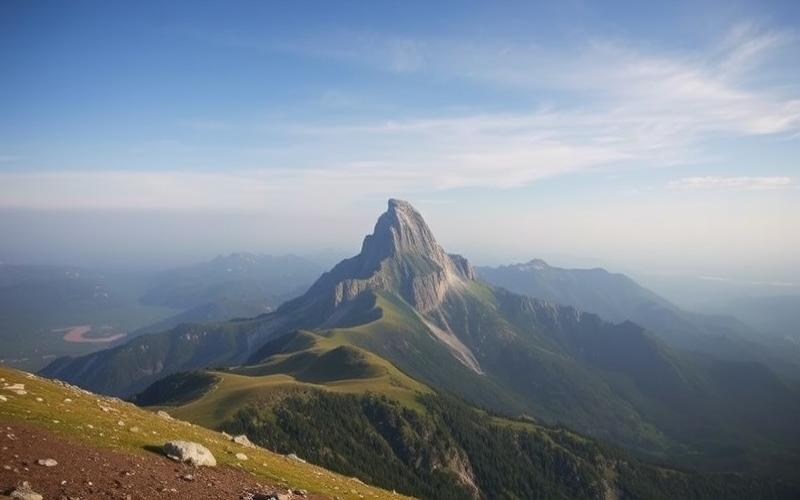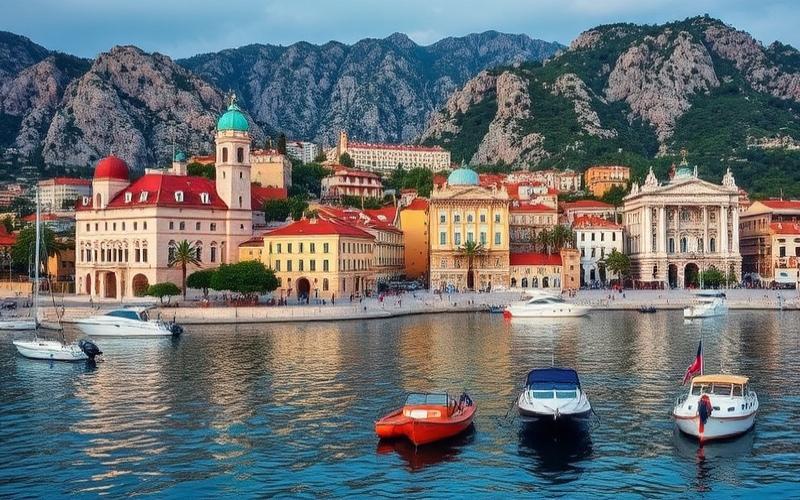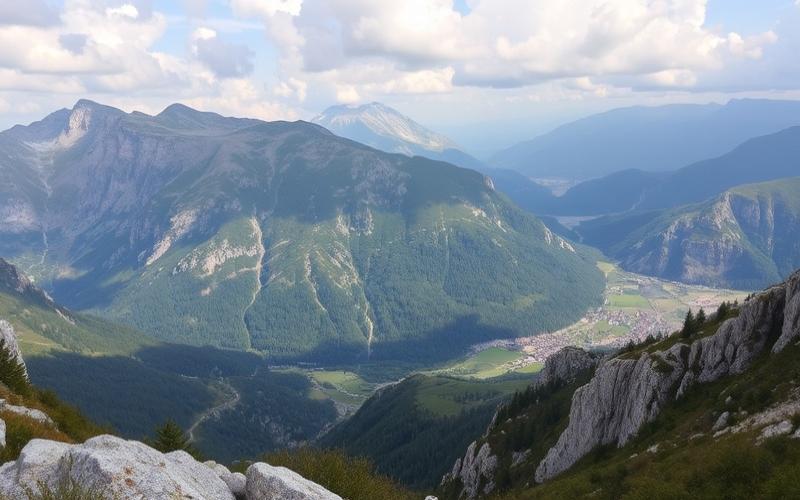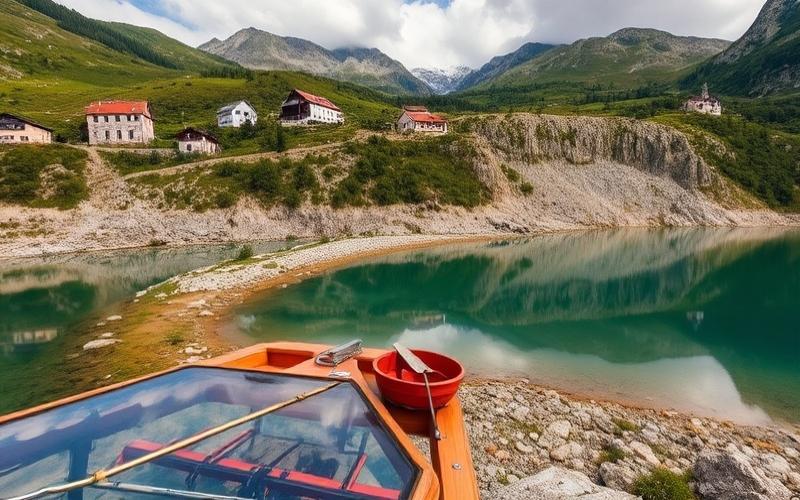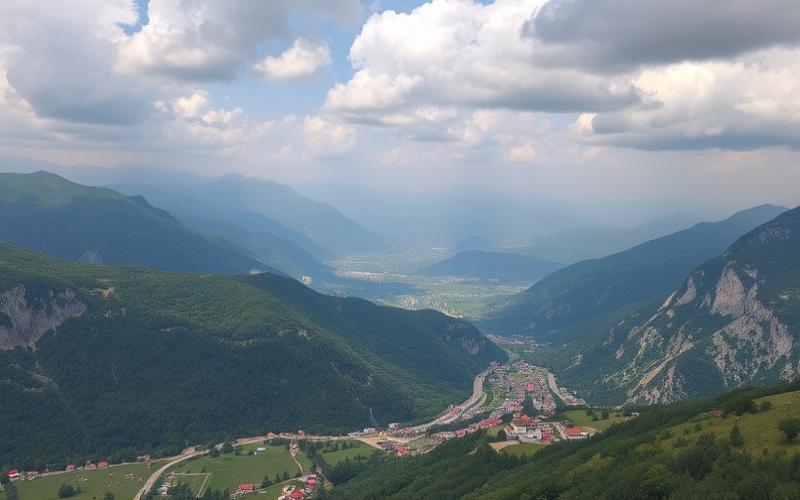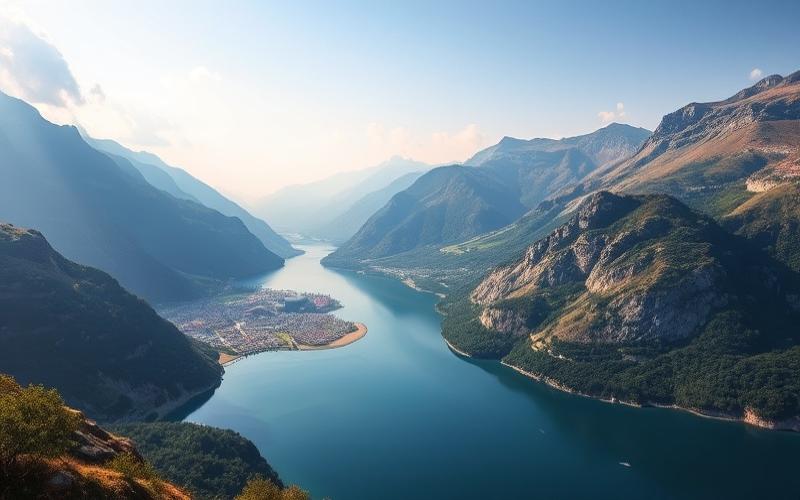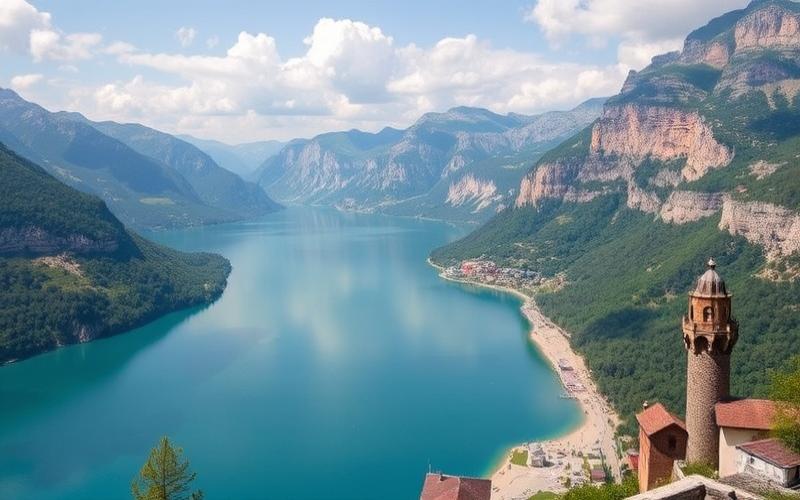
 Published on and written by Cyril Jarnias
Published on and written by Cyril Jarnias
Montenegro, the Balkan gem nestled between sea and mountains, is undergoing a true transformation of its real estate market driven by rapidly expanding tourism. This small country of fewer than 700,000 inhabitants is attracting an increasing number of visitors captivated by its breathtaking landscapes, rich historical heritage, and still affordable prices. This growing influx is having major repercussions on the real estate sector, creating new opportunities but also challenges for investors and local residents.
Montenegro’s tourist appeal continues to grow, with a spectacular increase in visitor numbers in recent years. In 2024, the country welcomed over 2.5 million tourists, a 15% increase compared to the previous year. This sustained tourism growth has a direct and significant impact on the local real estate market, transforming some regions into veritable goldmines for foreign investors and stimulating the development of new tourist infrastructure.
Tourist hotspots driving the real estate market
Tourism in Montenegro primarily concentrates on the Adriatic coast, home to the country’s most sought-after destinations. These areas attract not only tourists but also real estate investors, creating a unique dynamic in the market.
Bay of Kotor, UNESCO World Heritage gem
The Bay of Kotor, a UNESCO World Heritage site, is undoubtedly the undisputed star of Montenegrin tourism. This picturesque region, often compared to Norwegian fjords, attracts millions of visitors each year. The enthusiasm for Kotor and its surroundings has propelled the local real estate market to unprecedented heights. Property prices in Kotor’s Old Town and surrounding villages like Dobrota have seen a dizzying rise, sometimes reaching 5,000 euros per square meter for the most coveted properties with bay views.
Budva, the Pearl of the Adriatic
Budva, nicknamed the “Miami of the Balkans,” is the flagship destination for beach tourism in Montenegro. With its sandy beaches, vibrant nightlife, and medieval old town, Budva attracts a diverse clientele, from party-goers to families seeking relaxation. Budva’s real estate market reflects this popularity, with prices that have skyrocketed in recent years. Seafront apartments can easily trade around 3,000 to 4,000 euros per square meter, while luxury villas reach dizzying heights.
Tivat and Porto Montenegro, the new Saint-Tropez
Tivat, once a modest coastal town, has transformed into a luxury destination thanks to the development of Porto Montenegro, a high-end nautical and residential complex. This monumental project has attracted a wealthy international clientele, radically changing the local real estate landscape. Apartments in Porto Montenegro often sell for prices exceeding 10,000 euros per square meter, making this area one of the most expensive in the country.
Good to know:
Coastal areas like Kotor, Budva, and Tivat concentrate the majority of Montenegro’s tourist and real estate activity. These regions offer the best profitability prospects for investors, but also the highest prices.
Soaring real estate prices: boon or threat?
The massive influx of tourists and foreign investors has had a considerable impact on real estate prices in Montenegro, particularly in the most sought-after tourist areas.
Rapid price growth
Since 2015, real estate prices in Montenegro’s coastal regions have seen an average increase of 50 to 100%, depending on the area. This spectacular rise is explained by several factors:
- Growing demand for real estate from foreign investors
- Development of luxury real estate projects attracting wealthy clientele
- Improvement of tourist and transport infrastructure
- Prospect of future European Union membership, enhancing the country’s attractiveness
For example, the average price of an apartment in Budva increased from 1,500 euros per square meter in 2015 to over 3,000 euros in 2025, representing a 100% increase in ten years.
Consequences for the local market
This price surge has significant repercussions on the local real estate market:
- Investment opportunities for existing owners and investors
- Increasing difficulty for local residents to access property ownership
- Risk of creating “real estate bubbles” in some highly sought-after areas
- Development of a two-speed real estate market between tourist areas and the interior
Government response
Faced with this situation, the Montenegrin government has implemented several measures to try to regulate the market:
- Introduction of restrictions on land purchases by foreigners in certain sensitive areas
- Implementation of affordable housing programs for local residents
- Strengthening controls on illegal construction, particularly in coastal areas
Good to know:
The rise in real estate prices in Montenegro offers interesting opportunities for investors, but it also raises challenges in terms of housing accessibility for the local population. A balanced approach is necessary to ensure sustainable market development.
The rental investment boom: a windfall for property owners
The tourism boom in Montenegro has created fertile ground for rental investment, offering attractive profitability prospects for savvy property owners.
A thriving seasonal rental market
The high tourist influx during the summer season, typically extending from May to September, generates significant demand for short-term rentals. This dynamic has led many property owners to turn to seasonal rentals, often more profitable than annual leases. In the most sought-after areas like Budva or Kotor, occupancy rates exceeding 80% during peak season are not uncommon, with daily rates reaching 150 to 300 euros for a well-located two-bedroom apartment.
The emergence of online rental platforms
The rise of online rental platforms like Airbnb or Booking.com has significantly facilitated the rental of properties to tourists. In 2024, there were over 25,000 active listings on Airbnb in Montenegro, with nearly 70% concentrated on the Adriatic coast. This proliferation of short-term rentals has had a significant impact on the local real estate market, encouraging many investors to acquire properties specifically for tourist rentals.
Attractive rental yields
Rental yields in Montenegro’s tourist areas are among the highest in Europe. According to 2024 data, property owners can expect gross annual returns ranging from 6 to 10% in the best locations, with peaks reaching 15% for the most sought-after properties. These attractive figures are explained by the combination of still relatively affordable purchase prices and high rental rates during the tourist season.
Challenges of rental investment
Despite these enticing prospects, rental investment in Montenegro also comes with its share of challenges:
- Strong tourism seasonality, which can leave properties unoccupied for much of the year
- Increasing competition, with many investors entering the market
- Management and maintenance costs, particularly for non-resident owners
- Increasingly strict local regulations regarding short-term rentals
Good to know:
Rental investment in Montenegro offers attractive profitability prospects, particularly in coastal tourist areas. However, good knowledge of the local market and effective management are essential to maximize returns and address the specific challenges of this type of investment.
Emergence of new tourist and real estate hotspots
While the Adriatic coast remains the beating heart of Montenegrin tourism, new regions are gradually emerging on the country’s tourist and real estate map, offering interesting opportunities for visionary investors.
The mountainous north: untapped potential
The mountainous regions of northern Montenegro, long overshadowed by coastal destinations, are beginning to attract the attention of tourists and investors. Ski resorts like Kolašin 1450 and Žabljak, located in the Bjelasica and Durmitor massifs respectively, are experiencing rapid development. The Montenegrin government launched an ambitious plan in 2023 to invest over 300 million euros in developing tourist infrastructure in these regions by 2030.
This new dynamic is already reflected in the local real estate market. In Kolašin, for example, apartment prices increased by 30% between 2020 and 2025, rising from an average of 1,000 euros to 1,300 euros per square meter. Investors see this as an opportunity to acquire properties at still affordable prices in areas with high growth potential.
Rural and ecological tourism: a new niche
Montenegro is also betting on the development of rural and ecological tourism to diversify its offerings and attract clients seeking authenticity. Regions like Biogradska Gora National Park or the Tara Valley are seeing the emergence of eco-lodge and rural guesthouse projects. This trend opens new perspectives for real estate investment in areas previously little affected by mass tourism.
In 2024, overnight stays in rural accommodations increased by 25% compared to the previous year, demonstrating growing interest in this type of tourism. Real estate prices in these regions remain relatively low, with traditional houses available from 50,000 euros, offering interesting medium-term capital gain potential.
Historic inland cities
Historic cities like Cetinje, the former royal capital, or Nikšić, the country’s second-largest city, are also beginning to attract the attention of real estate investors. These cities benefit from rich cultural heritage and authentic atmosphere that appeal to more and more visitors seeking off-the-beaten-path experiences.
In Cetinje, the average price of apartments increased by 15% between 2020 and 2025, rising from 800 to 920 euros per square meter. Although these figures remain modest compared to the coast, they demonstrate positive momentum that could intensify in the coming years with the development of tourist infrastructure and improved accessibility to these regions.
Good to know:
The emergence of new tourist destinations in Montenegro offers interesting investment opportunities in still underdeveloped regions. Savvy investors can benefit from attractive entry prices and significant medium to long-term growth potential.
Challenges and opportunities for the future of Montenegro’s real estate market
Montenegro’s real estate market, driven by the tourism boom, stands at a turning point in its development. While prospects remain generally positive, several challenges and opportunities are emerging on the horizon.
The sustainability challenge
One of the main challenges for the future of Montenegro’s real estate market is reconciling tourist development with environmental preservation. The country, positioning itself as an ecotourism destination, must ensure that real estate growth does not come at the expense of its natural assets.
The government implemented new regulations in 2024 imposing strict environmental standards for new real estate projects in coastal and mountainous areas. This initiative, while potentially slowing some developments in the short term, should help preserve Montenegro’s long-term attractiveness and attract investors sensitive to sustainability issues.
The digitalization opportunity
The digitalization of the real estate sector offers new opportunities for the Montenegrin market. The growing adoption of technologies like virtual reality for remote viewings or blockchain-based smart contracts could facilitate international transactions and attract more foreign investors.
In 2024, Montenegro launched a national digital cadastre platform, significantly simplifying real estate registration procedures. This initiative should help increase market transparency and reassure international investors.
The seasonality challenge
The strong seasonality of Montenegrin tourism remains a major challenge for the real estate market, particularly in coastal areas. Efforts to develop off-season tourism, particularly through the promotion of health and wellness tourism, could have a positive impact on the real estate market by enabling better year-round profitability of rental investments.
The European integration opportunity
The prospect of Montenegro’s future accession to the European Union continues to positively influence the real estate market. Although the accession process has experienced slowdowns, progress in negotiations strengthens the confidence of international investors.
The gradual harmonization of Montenegrin legislation with European standards, particularly regarding property rights and real estate market regulation, should help further secure foreign investments in the country.
Good to know:
Montenegro’s real estate market, while promising, faces significant challenges in terms of sustainability and seasonality. Investors must remain attentive to these issues while knowing how to seize opportunities offered by digitalization and European integration prospects.
Conclusion: A dynamic market with multiple facets
The impact of tourism on Montenegro’s real estate market is undeniable and multifaceted. From soaring prices in sought-after coastal areas to the emergence of new investment destinations in the hinterland, the country’s real estate landscape is rapidly transforming under the impulse of an expanding tourism sector.
For investors, Montenegro offers an attractive cocktail of still relatively affordable prices, potentially high rental yields, and interesting medium to long-term capital gain prospects. However, like any rapidly developing market, it also carries its risks and challenges, particularly in terms of regulation, sustainability, and seasonality management.
The key to success for investors looking to position themselves in this market lies in a deep understanding of local dynamics, a long-term vision, and the ability to anticipate future developments in Montenegrin tourism and economy. Whether in the established hotspots of the Adriatic coast or in the emerging regions of the country’s interior, Montenegro continues to offer interesting opportunities for savvy investors.
Disclaimer: The information provided on this website is for informational purposes only and does not constitute financial, legal, or professional advice. We encourage you to consult qualified experts before making any investment, real estate, or expatriation decisions. Although we strive to maintain up-to-date and accurate information, we do not guarantee the completeness, accuracy, or timeliness of the proposed content. As investment and expatriation involve risks, we disclaim any liability for potential losses or damages arising from the use of this site. Your use of this site confirms your acceptance of these terms and your understanding of the associated risks.

